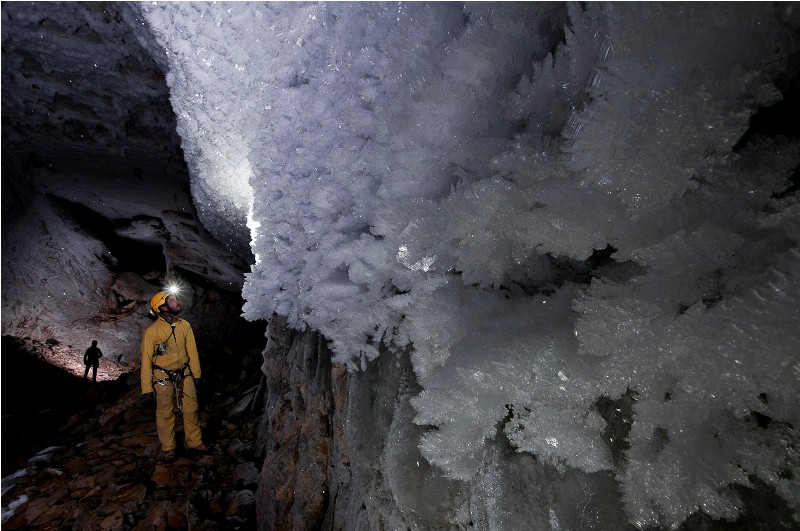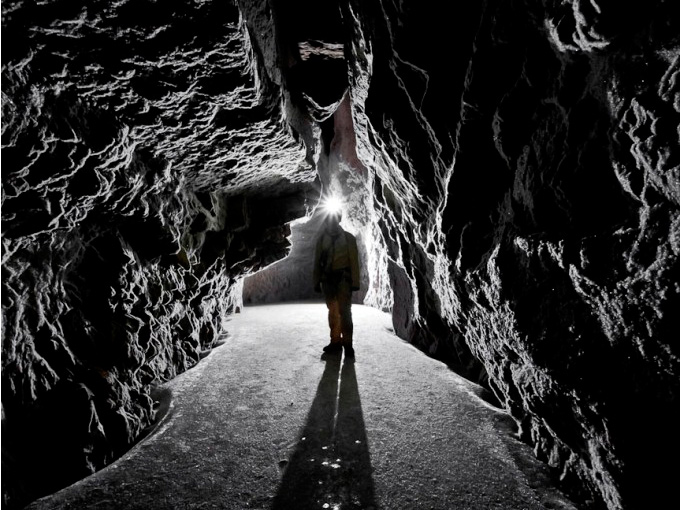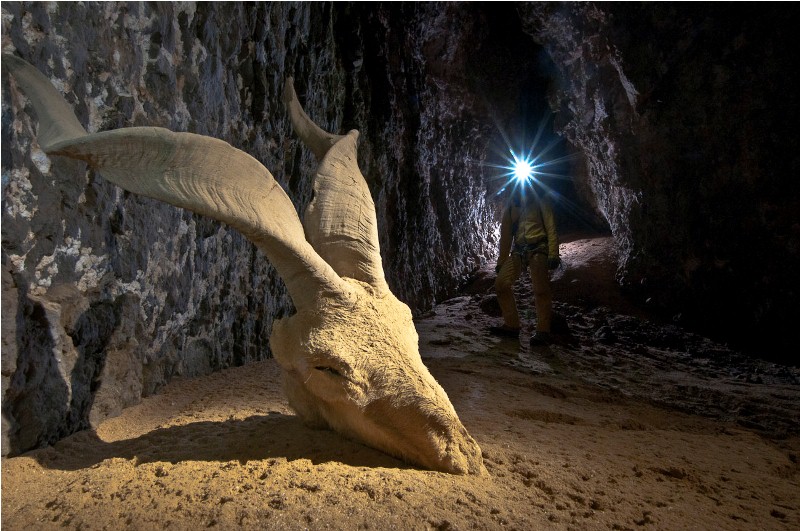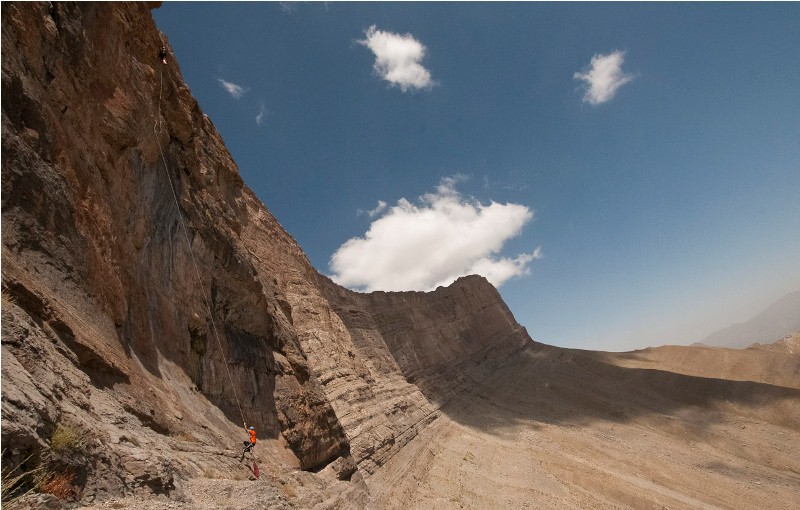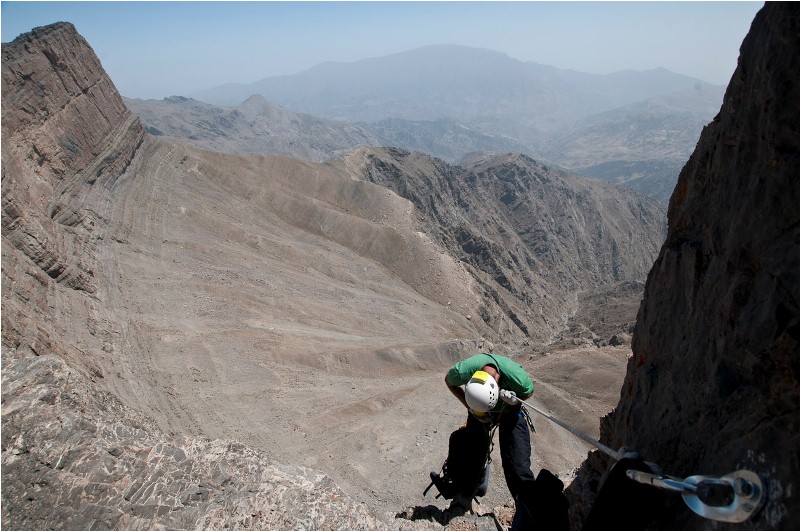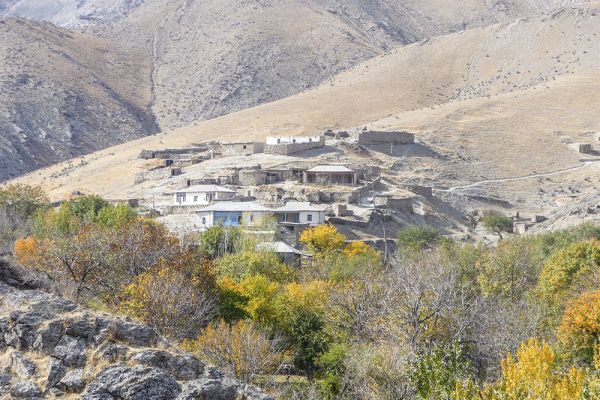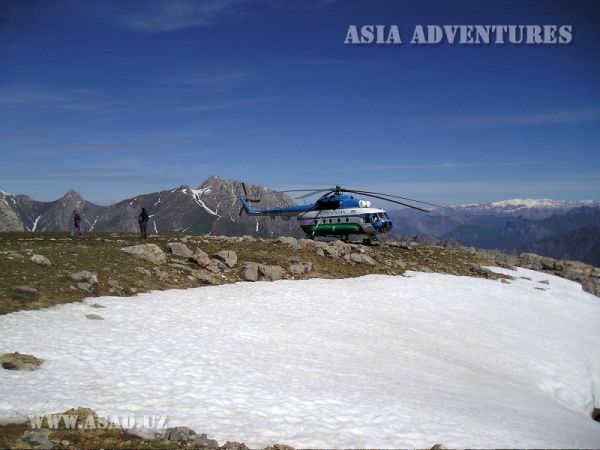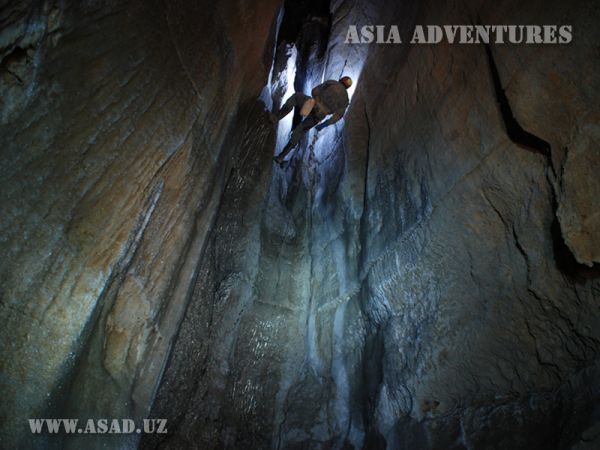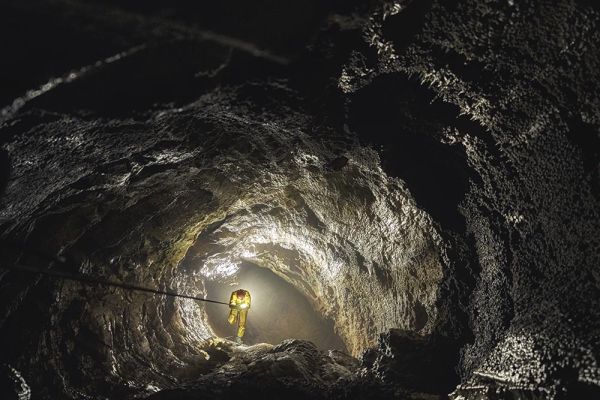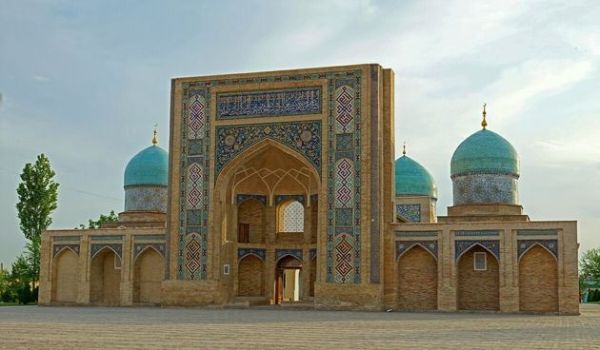Dark Star Cave
The Dark Star Cave is located in the Khoja-Gurgur–Ata massif, Baysuntau ridge (southwestern spurs of the Gissar Range) in the Baysun district of the Surkhandarya region of Uzbekistan. The entrance to the cave is located almost in the center of an almost vertical 300m wall at an absolute height of about 3700 m.
The cave was discovered in 1990 by the English group of speleologists “Aspex 90", who worked as part of the international Russian-English speleological expedition “Baysun-90". The difficult ascent from the base of the wall took 3 days. The entrance to the cave (60 m high and 7 m wide) is located at a height of 160 m from the base of the wall. The walls of the cave were almost completely covered with large ice crystals, there were many frozen lakes, and the air temperature ranged from -2 to -5 degrees. The cave was more than two kilometers long and about 100 meters deep. The cave ended in a T-shaped fork with several passages coming from above and a large well, unexplored due to lack of equipment. In 1991, the British expedition ”Aspecs 91" tried to continue the research, but the melted ice on the surface of the lakes prevented the passage of wide galleries.
The research in the cave was continued in August 2011 by a Russian-Italian expedition organized by the Yekaterinburg City Club of Speleologists with the support of the Ural Association of Speleologists and the Italian Geographical Research Association La Venta. After descending into a new 25-meter well and rising 10 meters, a large gallery was discovered. At the end of the gallery, the cave turned south and connected to the huge entrance on the wall R-21. It turned out that the speleologists managed to get from the Dark Star cave to the Izhevsk cave, which was surveyed by Izhevsk speleologists in 1988. This entrance made it faster and easier to get to the deepest part of the cave. Another new entrance to the Vino Rosso system was also opened with a half-kilometer Sokolovsky meander. In the last days of the expedition, a 15-meter ascent in a T-shaped well brought the speleologists to new giant galleries with a length of more than 1.5 km, the study of which allowed them to reach a depth of -300 m. Especially impressive is the huge grotto "Full Moon" with giant ice crystals and sculptures. A large number of branches were never explored due to the end of the expedition. The discovery of new entrances in addition to the 4 known ones (Dark Star, Capricorn, Red Dwarf, Cancer) made it possible to combine them into a complex 4.5 km long karst.
In 2012, the Yekaterinburg Club of Speleologists, with the support of the Ural Association of Speleologists, conducted the largest expedition to the Khoja-Gur Gur Ata ridge in recent years: 29 people from 5 countries and many cities of Russia took part in it. With the support of the La Venta Association, Italian and Spanish speleologists took part in the expedition. All the work was concentrated in one of the side branches, found in 2011 at a depth of 240 m, exactly in the place where the unfinished well remained. Not far from the beginning of the new part, a PBL was set up, where from 3 to 6 speleologists worked in shifts. The approaches to the PBL were complicated by the high water level in the lakes, and 5-6 railings had to be overcome. Nevertheless, the PBL justified itself, the groups living in them filmed on average 2 times more per shift than the groups coming to the topography from the ground camp. At the end of the expedition, we decided to check the upper floor of the meander, located near the Gothic Grotto at a depth of 450 m, and got into a completely new system of passages. On the final day of work, it was possible to organize a massive exit to this part, the main moves were filmed. The assault group reached a depth of 600 meters, where they stopped in front of another well, which traditionally did not have enough time or rope to pass.
In 2013, the research was continued by an expedition of Ural and Italian speleologists. We managed to get to a depth of -850 m, where a siphon blocked the way.
The Dark Star cave system has become the third deepest and longest in Uzbekistan, surpassing the neighboring Festivalnaya-Icefall cave system (-850m) and has an incredible depth potential (theoretically up to 2,300 m), which will be a world depth record. But further expeditions will show this.
